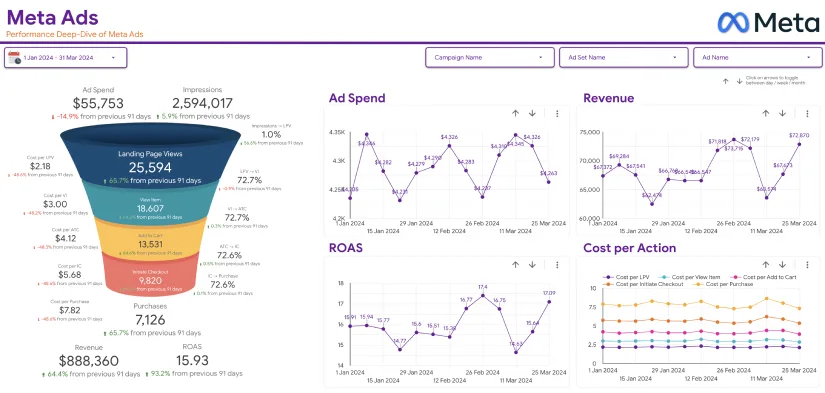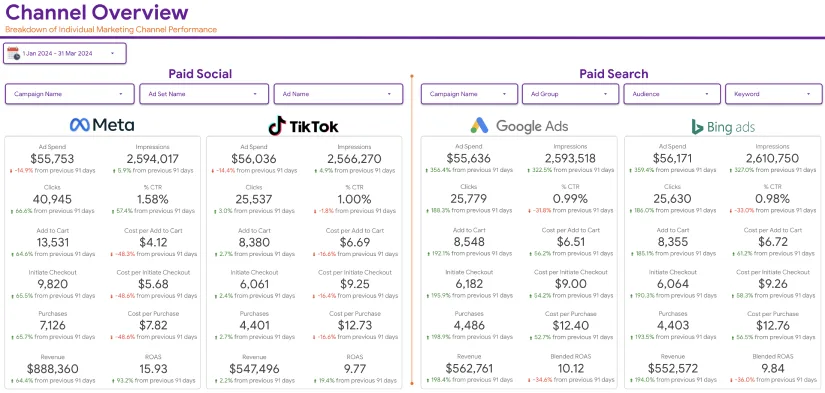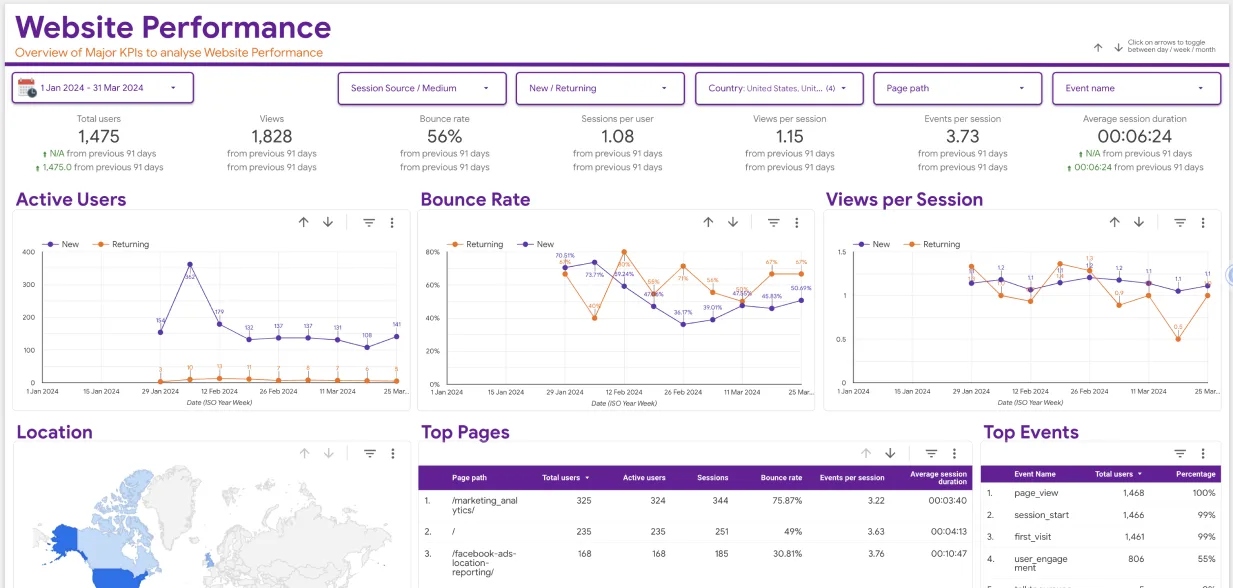Attribution in digital marketing has evolved significantly, and Google Ads’ Data-Driven Attribution (DDA) model is leading the way. Unlike traditional models that rely on rigid assumptions, DDA uses machine learning to analyze user behavior across touchpoints, making it a superior choice for advertisers aiming for precision and performance.
In this comprehensive guide, we’ll explore how to set up and optimize the Data-Driven Attribution model in Google Ads. Whether you’re new to the concept or seeking advanced tips, this tutorial is designed to help your campaigns succeed.
Why Data-Driven Attribution Matters
What is Data-Driven Attribution in Google Ads?
Data-Driven Attribution is an attribution model in Google Ads that distributes credit for conversions based on how users interact with your ads and decide to convert. Unlike the Last-Click model, which gives all credit to the final interaction, DDA considers the entire customer journey, from the first interaction to the last. This ensures a more nuanced understanding of your campaign performance.

Benefits of Using Data-Driven Attribution
- Improved Accuracy: By analyzing real user data, DDA provides a more accurate picture of which ads and keywords contribute to conversions. Unlike traditional models, DDA uses algorithms to weigh the influence of each interaction.
- Informed Decision-Making: With a deeper understanding of touchpoints, advertisers can make data-backed decisions. This reduces guesswork and allows for more precise adjustments to campaigns.
- Enhanced ROI: By identifying the most impactful ads and keywords, you can focus your resources where they matter most, driving better returns on investment.
- Adaptable to Changing Behaviors: The model continuously learns from user behavior, adapting to shifts in the market or audience trends. This ensures your campaigns remain effective over time.
Prerequisites for Implementing Data-Driven Attribution
Before diving into the setup, ensure you meet these requirements:
- Sufficient Data Volume: Google requires a significant amount of conversion data to activate DDA. Smaller accounts may need to use another model initially. A consistent stream of interactions ensures the model’s accuracy.
- Conversion Tracking: Proper tracking setup in Google Ads is essential for accurate attribution. Without this, the insights generated by DDA will be incomplete or unreliable.
- Google Ads and Google Analytics Integration: Linking these platforms allows for seamless data analysis, providing a more comprehensive view of the customer journey.
Step-by-Step Guide to Setting Up Data-Driven Attribution
Step 1: Review Your Conversion Actions
- Navigate to your Google Ads account.
- Click on Tools & Settings in the top menu.
- Select Conversions under the “Measurement” section.
- Review existing conversion actions and ensure they align with your business goals. This step ensures that only relevant actions are being tracked, avoiding unnecessary noise in your data.
Step 2: Enable Data-Driven Attribution
- Go to the Conversions page.
- Click on a conversion action you wish to modify.
- Under “Attribution Model,” select Data-Driven Attribution from the dropdown menu.
- Save your changes.
- By enabling DDA, you allow Google’s algorithms to distribute credit across multiple touchpoints, offering a more holistic view of your campaign’s impact.
Step 3: Verify Data Collection
Ensure your account collects sufficient interaction data. Use the Insights tab to confirm that the volume of clicks, impressions, and conversions meets Google’s thresholds. Regularly check for discrepancies or tracking issues that might compromise the quality of the data.
Step 4: Monitor Performance
Transitioning to DDA may temporarily affect performance metrics. Monitor your campaigns closely to understand the impact and identify opportunities for optimization. Be patient, as it may take time for the model to gather sufficient data and provide actionable insights.

Optimizing Your Data-Driven Attribution Setup
1. Utilize Audience Segmentation
Leverage audience lists to analyze how different segments interact with your ads. For instance, compare new users versus returning users or segment based on geographic regions. Google’s DDA model performs best when paired with detailed audience insights, helping you tailor strategies to specific user groups.
2. Focus on High-Value Actions
Not all conversions are created equal. Prioritize high-value actions such as purchases, subscriptions, or lead sign-ups. These actions align with your business objectives and help the model learn which touchpoints contribute most effectively.
3. Regularly Update Conversion Actions
Ensure your tracked actions align with your evolving business goals. For example, if you’ve introduced a new product or service, update your conversion tracking to reflect these changes. This ensures your data remains relevant and actionable.
4. A/B Testing
Run experiments to compare performance metrics before and after switching to DDA. Use controlled tests to measure the impact of this model on key metrics like conversion rates and cost-per-conversion. This process validates the effectiveness of the DDA model in your campaigns.
5. Integrate with Google Analytics 4 (GA4)
Linking Google Ads with GA4 provides a holistic view of user behavior, enriching the data available for DDA. GA4’s advanced analytics features complement DDA by offering insights into user paths and engagement metrics across platforms.
Common Mistakes to Avoid
- Ignoring Data Thresholds: Switching to DDA without sufficient data can lead to unreliable insights. Ensure you meet Google’s minimum data requirements before implementation.
- Not Monitoring Early Performance: Performance fluctuations are common during the initial transition. Regular monitoring allows you to identify and address any anomalies promptly.
- Overlooking Assisted Conversions: Analyze assisted conversions to understand the full impact of your ads. Neglecting this data may lead to undervaluing critical touchpoints.
Advanced Tips for Maximizing ROI with Data-Driven Attribution
1. Leverage Machine Learning Insights
Use Google’s recommendation tools to identify optimization opportunities. These insights are aligned with the DDA model’s findings, ensuring consistent strategy execution. By following these recommendations, you can refine your bids, budgets, and targeting strategies.
2. Optimize Bidding Strategies
Adopt automated bidding strategies like Target ROAS or Maximize Conversions, which complement the DDA model’s data-driven insights. These strategies leverage real-time data to adjust bids dynamically, maximizing the efficiency of your campaigns.
3. Expand Your Keywords
Identify keywords contributing to assisted conversions and incorporate them into your campaigns. This ensures you’re capturing the full range of user intent and driving incremental conversions.
4. Utilize Cross-Device Tracking
Enable cross-device tracking to gain a complete view of user behavior across multiple devices and platforms. This feature is particularly valuable for understanding complex customer journeys.
5. Employ Custom Reports
Create custom reports in Google Ads to dive deeper into the performance of campaigns, ad groups, and keywords under the DDA model. Tailored reporting enables you to uncover hidden opportunities and address potential weaknesses in your strategy.
Conclusion
The Data-Driven Attribution model in Google Ads is a game-changer for marketers aiming for precision and performance. By following this step-by-step guide, you can implement and optimize DDA effectively to enhance your campaign’s ROI. Remember, the key lies in continuous monitoring, testing, and adaptation to harness the full potential of this advanced attribution model.At Eaglytics, we specialize in helping businesses unlock the power of Google Ads attribution models. Contact us today to elevate your advertising strategies to the next level.






